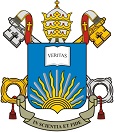| Compartilhamento |


|
Use este identificador para citar ou linkar para este item:
http://tede2.pucgoias.edu.br:8080/handle/tede/5087| Tipo do documento: | Dissertação |
| Título: | Subtração do córrego Buritis no espaço urbano de Goiânia |
| Título(s) alternativo(s): | Subtraction of the Buritis stream in the urban space of Goiânia |
| Autor: | Braga, Fernanda Nogueira de Amorim  |
| Primeiro orientador: | Resende, Sandra Catharinne Pantaleão |
| Primeiro membro da banca: | Gumiero, Rafael Gonçalves |
| Segundo membro da banca: | Moraes, Lúcia Maria |
| Resumo: | As etapas de urbanização de Goiânia são marcadas por modernizações, expressando relações entre desenvolvimento econômico e regional e ocupação territorial, modificando sua paisagem urbana. Entre as alterações, destaca-se a mudança hidrográfica, à medida que parte dos cursos d'água foram soterrados ou suprimidos ao longo da construção e expansão da cidade. Nas documentações oficiais sobre os recursos hídricos consta que, inicialmente, o sítio escolhido para implantação da nova capital, possuía 89 nascentes e 85 cursos d'gua. Entre esses cursos, tem-se o Córrego Buritis, situado entre os córregos perenes, Capim Puba e Botafogo, cuja escassez de mapeamentos dificulta precisar a localização do seu curso original. Revisitando as fontes históricas primárias, é possível observar as modificações do projeto inicial de Goiânia, que contribuíram sobremaneira para a supressão do Córrego Buritis, objeto de análise deste trabalho. Para tanto, são apresentados os fenômenos que incitaram a expansão da cidade e seu rápido crescimento, mediante a formação de novos bairros e a ocupação do seu canal. Com o crescimento demográfico e ocupação de áreas adjacentes ao plano original, houve a necessidade de integrar as áreas dos Setores Oeste, Campinas, Aeroporto e Sul, aterrando ou canalizando o Córrego Buritis que definia os limites entre eles. Com isso, esse curso d'água passou despercebido na maior parte do período de constituição da capital até a década de 1970, quando houve seu desaparecimento, restando apenas duas áreas: a quadra dos clubes, no Setor Sul e o Bosque dos Buritis. O presente trabalho caracteriza a formação, consolidação e transformação da paisagem urbana de Goiânia, observando os processos de modificações hidrológicas a partir do mapeamento do canal do Córrego Buritis e como a ocupação territorial contribuiu para a mudança da dinâmica hídrica, mediante a análise das séries históricas relativas ao curso d'água, elaborado pela Agência Municipal de Meio Ambiente, permitindo, observar as relações entre ordenamento territorial e recursos hídricos |
| Abstract: | The stages of urbanization in Goiânia are marked by modernization, expressing relations between economic and regional development and territorial occupation, modifying its urban landscape. Among the changes, the hydrographic change stands out, as part of the watercourses were buried or suppressed during the construction and expansion of the city. In the official documentation on water resources, it is stated that, initially, the site chosen for the implementation of the new capital had 89 springs and 85 watercourses. Among these courses, there is the Buritis Stream, located between the perennial streams, Capim Puba and Botafogo, whose scarcity of mapping makes it difficult to pinpoint the location of it's original course. Revisiting the primary historical sources, it is possible to observe the modifications of the initial project of Goiânia, which greatly contributed to the suppression of the Buritis Stream, object of analysis of this work. To this end, the phenomena that incited the expansion of the city and its rapid growth through the formation of new neighborhoods and the occupation of its canal are presented. With the demographic growth and occupation of areas adjacent to the original plan, there was a need to integrate the areas of the West, Campinas, Airport and South Sectors, filling or channeling the Buritis Stream that defined the boundaries between them. As a result, this watercourse went unnoticed for most of the period of the capital's constitution until the 1970s, when it disappeared, leaving only two areas: the clubs' court, in the South Sector and the Buritis Forest. The present work characterizes the formation, consolidation and transformation of the urban landscape of Goiânia, observing the processes of hydrological modifications from the mapping of the channel of the Buritis Stream and how the territorial occupation contributed to the change of the water dynamics, through the analysis of the historical series related to the watercourse, elaborated by the Municipal Environment Agency, allowing us to observe the relationships between spatial planning and water resources |
| Palavras-chave: | Córrego buritis Expansão urbana Corpos d’água urbanos História urbana de Goiânia Buritis stream Urban expansion Urban water bodies Urban history of Goiânia |
| Área(s) do CNPq: | Ciências Sociais Aplicadas |
| Idioma: | por |
| País: | Brasil |
| Instituição: | Pontifícia Universidade Católica de Goiás |
| Sigla da instituição: | PUC Goiás |
| Departamento: | Escola de Direito, Negócios e Comunicação |
| Programa: | Programa de Pós-Graduação STRICTO SENSU em Desenvolvimento e Planejamento Territorial |
| Citação: | BRAGA, Fernanda Nogueira de Amorim. Subtração do córrego Buritis no espaço urbano de Goiânia. 2023. 153 f. Dissertação (Mestrado em Desenvolvimento e Planejamento Territorial) -- Escola de Direito, Negócios e Comunicação, Pontifícia Universidade Católica de Goiás, Goiânia, 2023. |
| Tipo de acesso: | Acesso Aberto |
| URI: | http://tede2.pucgoias.edu.br:8080/handle/tede/5087 |
| Data de defesa: | 16-Nov-2023 |
| Aparece nas coleções: | Mestrado em Desenvolvimento e Planejamento Territorial |
Arquivos associados a este item:
| Arquivo | Descrição | Tamanho | Formato | |
|---|---|---|---|---|
| Fernanda Nogueira de Amorim Braga.pdf | Texto completo | 57,35 MB | Adobe PDF |  Baixar/Abrir Pré-Visualizar |
Os itens no repositório estão protegidos por copyright, com todos os direitos reservados, salvo quando é indicado o contrário.




